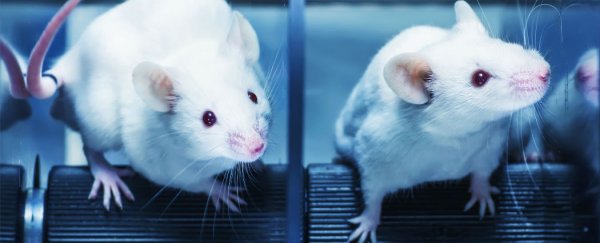New research into the pain processing of mice has found male and female mice process pain differently, and the discovery may also apply to other species, including humans. Scientists are now questioning what this means for the future of medical research, which until now, has had a strong bias towards experimenting on male mice.
The study looked at immune cells called microglia, which are housed by the brain and spinal cord and are responsible for signalling to the neurons that they need to activate the feeling of pain in the event of an injury. Microglia not only help kick the feeling of pain into gear, they also regulate how severe that pain is, depending on the type of injury.
Previous studies led by pain expert, Jeffrey Mogil from McGill University in the US, suggested that microglia could play a more important role in the processing of pain for male mice than for female mice, so he decided to specifically target these immune cells to see if they would illicit a different response.
Male and female mice with chronic pain hypersensitivity were given drugs that were designed to interfere with their microglia in a way that made them more tolerant to pain. While the drugs caused the hypersensitive male mice to no longer feel heightened levels of pain, they appeared to have no effect on the females. This result occurred again and again, across a range of different scenarios.
"Whatever the manipulation is, in every case, blocking microglia or some part of the microglial system brings the pain sensitivity back to normal in male mice, and doesn't do anything in female mice," Mogil told Arielle Duhaime-Ross at The Verge.
The results, which were published in Nature Neuroscience, are pretty nuts, because they suggest that a crucial biological process is being governed in an entirely different way in males and females of a particular species of mammal. This means we have a pretty good idea of what could be controlling the feeling of pain in male mice, but we have no idea what that is in females (although Mogil and his team suspect it could be another type of immune cell: the T cell). And that's a problem, because what do we use to develop pain medications and treatments for women? Mice.
According to Duhaime-Ross, there are now 100 million people living with chronic pain in the US, and many conditions are more likely to affect women than men. If we're going to develop more effective treatments, we need to properly understand how pain is processed in the female mice we initially test them on.
Roni Caryn Rabin explains at The New York Times:
"Laboratory tradition has had enormous consequences for women. Name a new drug or treatment, and odds are researchers know far more about its effect on men than on women. From sleeping pills to statins, women have been blindsided by side effects and dosage miscalculations that were not discovered until after the product hit the market."
And that's only half the problem - more often than not, these medications and treatments are being tested on male mice, not female mice. Jonathan Fisher reports for Business Insider that in 2009, male bias in neuroscience "saw single-sex studies of male animals outnumbering those of females 5.5 to 1".
Duhaime-Ross explains at The Verge that this has to do with the perception that hormonal changes in females mess with results too much. "Yet a number of studies - including one from Mogil's lab - have shown that this isn't the case."
So often when we're talking about a new medical study, we have to remind ourselves not to get too invested in the results because mice aren't humans and humans and mice. But in this case, we need to be a hell of a lot more invested in what's going on, because big changes in centuries-old practices and perceptions in the field of medicine don't come easy.
Head to The Verge to hear more from Mogil about the results of the study.
